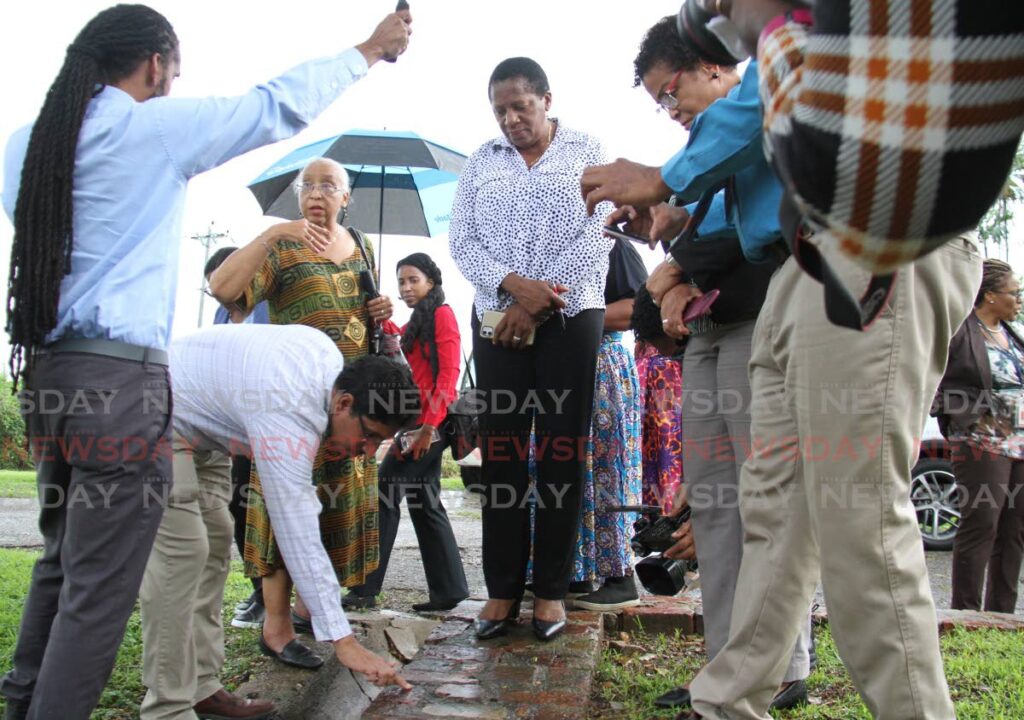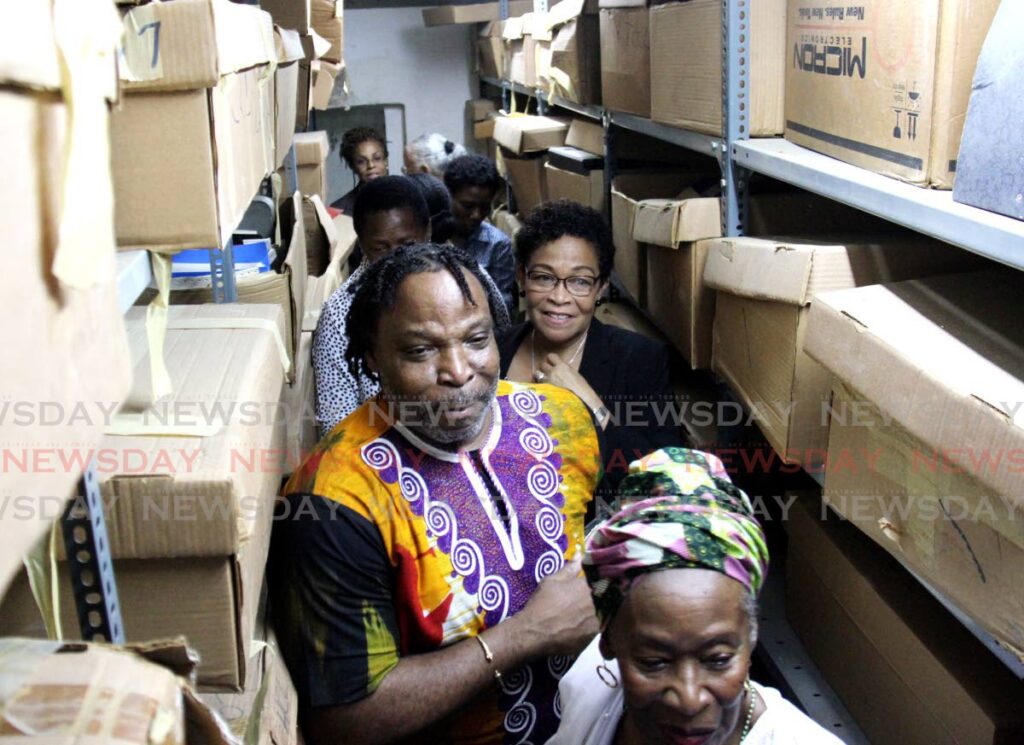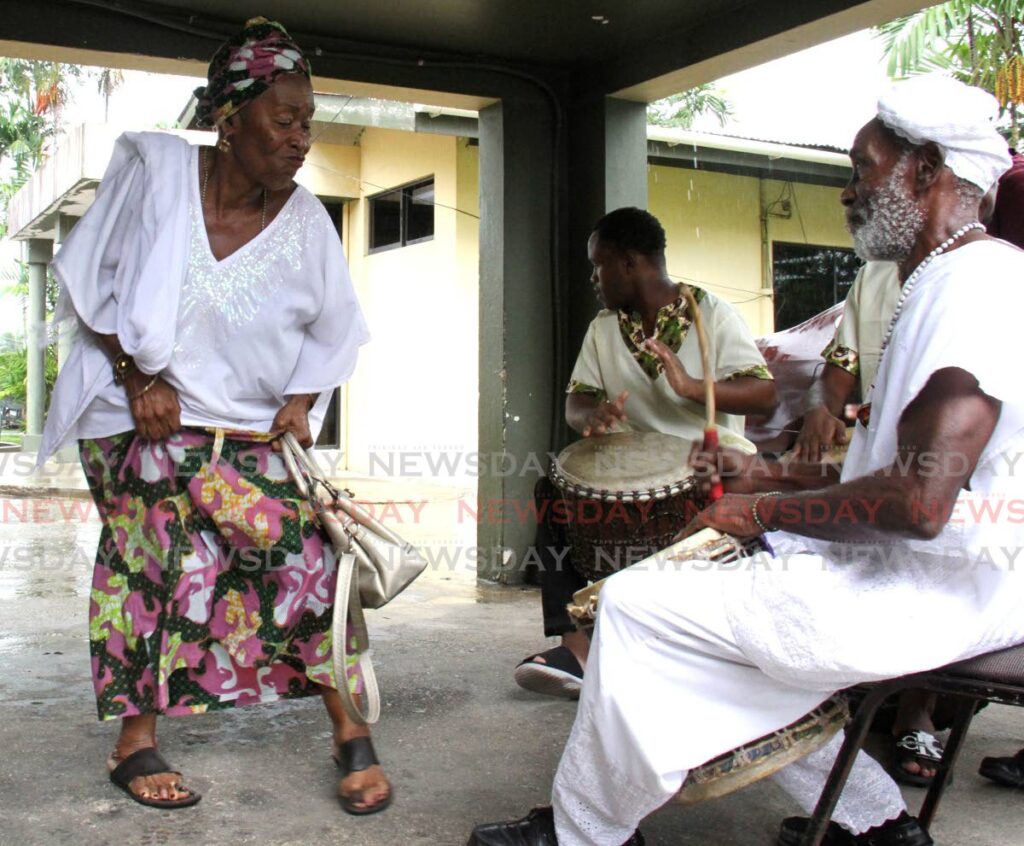National Trust reveals possible slave pen in Tacarigua

The National Trust and the Idakeda Group revealed a room and tunnels on the Home Construction Ltd compound in Tacarigua on Wednesday which may have been used to hold enslaved people on the Orange Grove Plantation.
National Trust chair Margaret McDowall, while showing government and state officials as well as the media around the room, said, “There are certain things we know and certain things we feel. We know the room is too small for grain, and too large for valuables. There’s a grilled cast-iron grate at the front, so it’s probably not a space for the plantation owners and their families to hide from slaves. So our tentative conclusion is that it was used to hold slaves.
“We’re not sure if the slaves held here would have been those too dangerous to allow to walk through the plantation, since there is a tunnel leading into the room. They may also have been ringleaders of rebellions, or new slaves who were being held to be 'seasoned.'”
The walls of the room, said McDowell, were made of lime mortar, which was porous and expanded and contracted depending on temperature and moisture. It was for this reason that the paint could be seen peeling off the walls, as modern paint did not adhere well to that type of mortar.
McDowell said the tunnel had been sealed up by HCL when it moved onto the compound, and the trust was trying to find people who would have been with the organisation at the time.
Also on the property was a wall composed of ballast bricks brought over from Scotland in slave ships. The bricks were stamped with the date 1885, and the name and address Jas Goldie and Son Shawfield Toll Glasgow. McDowell said the cast-iron gate and columns found in the room had also possibly come from Scotland. She noted the slave trade had been abolished by 1834, so the presence of the bricks meant it had continued.

McDowell said research would be done in various archives and museums to find out when the structures were constructed and for what purpose. She said the trust would seek help from historians and archaeologists to open up the tunnels and dig down into the structure.
“When the slaves were emancipated, all the slaves moved off the plantation, and the plantation owners only had a few years to accommodate the indentured people who were brought in. The owners demolished everything to make room for these people, who were working under different terms and conditions. There would have been no need for slave pens and the like.”
McDowell said she had been alerted to the presence of the sites by activist Eintou Pearl Springer. Springer said she had been told about them in 2018 by Prof Stephen Sheppard at the launch of Prof Selwyn Cudjoe’s book The Slavemaster of Trinidad: William Hardin Burnley and the Nineteenth-Century Atlantic World.
Burnley owned the Orange Grove estate, and was one of the earliest planters to write to the British government to bring in indentured people, McDowell said.
Springer said the Idakeda Group had asked various people to investigate, and they had first visited the site in 2021.
“We have gone into the site and felt the energy in that place, that slave dungeon where our ancestors were held chained. There is a tunnel going from the dungeon into the plantation where they worked, as our people were always rebelling so they couldn’t be trusted to walk in daylight, so they had to take them under the tunnel. We have poured libations, we have felt the energy, we have heard from people working in this place stories of people walking about in the night, all kinds of strange and wonderful stories.”
Ancestral chants were carried out by Idakeda members and the Idakeda drumming group, along with an Egungun masquerade, before those present, including Planning and Development Minister Pennelope Beckles and Port of Spain South MP Keith Scotland, were invited to view the room, currently being used as a document storeroom by HCL.

Springer lamented that there were no official monuments to the African people in TT, while Christopher Columbus remained on his pedestal. She said there were places of memory for Africans in TT that could be marked.
“Our government has done nothing for the International Decade for People of African Descent, which was celebrated from 2015-2024. The Reparations Committee has been gutted, I don’t think there’s anyone on the committee right now. The history of the African people is not taught in our schools, and I think our education system contributes to the criminalisation of African people. All of these things are glaring and we need to address them as a society. We need to bring equity to the African people who remain.
“When Emancipation was given, there was a further six years of apprenticeship that was to take place, but because our people kept rebelling, and carrying out poisonings and obeah, the slaves were fully freed after four years. The planters were paid $1 million (sic) for the loss of their property, as they considered the slaves (to be).”
Beckles said she was informed about the site a few months ago. She said it was an exciting experience.
“I don’t think it’s often we get to participate in something of this nature. The National Trust falls under my ministry, and we are fortunate to have Margaret to give us some of this history.
"We have done preliminary visits but we will need archaeologists and historians, it’s going to require us to do some type of research, and I know we have people around that will guide us accordingly.
“As a person of African descent, there’s nothing greater than coming to a place like this and feeling like you’re getting a little closer to understanding the complexities of your own being, because sometimes you just don’t have that opportunity.”
Scotland said the significance of the timing had not escaped him, coming a few days before the celebration of Emancipation Day.
“Sometimes words cannot express the raw feelings that these types of events bring out in me. This is monumental, it’s part of our history that we must embrace but we must address. I think that is very significant.
"Eintou spoke about the decade of African presence—they can’t give us a decade, we have been here since time immemorial. So when they limit us like that and we buy into that narrative, we can only just follow suit.
“What we have unearthed today is significant in more ways than one and I think it is time as a country we begin to be more conscious of our past and also to let it form our future.”

Comments
"National Trust reveals possible slave pen in Tacarigua"